| The Four Seasons | |
|---|---|
 Winter, detail | |
| Artist | Francesco Sozzi |
| Year | 1760 |
| Type | Fresco cycle |
| Location | Palazzo Isnello, Palermo |
The Four Seasons (Le Quattro Stagioni it) is a cycle of four frescoes by Francesco Sozzi in the Palazzo Isnello, Palermo, Italy.
| The Four Seasons | |
|---|---|
 Winter, detail | |
| Artist | Francesco Sozzi |
| Year | 1760 |
| Type | Fresco cycle |
| Location | Palazzo Isnello, Palermo |
The Four Seasons (Le Quattro Stagioni it) is a cycle of four frescoes by Francesco Sozzi in the Palazzo Isnello, Palermo, Italy.
The cycle, completed in 1760, was painted on the Four Seasons Hall vault of the Counts of Isnello palazzo's. It is a graceful example of Palermitan Rococo, that is, late-Sicilian Baroque, fresco cycles. [1] The four paintings are framed in butterfly wing shape, decorative solution adopted at Palazzo Isnello. [2] Among the gilded stucco decoration of the vault there is the artist signature, dated 1760 in golden characters.
In the four allegorical paintings each of the seasons is represented by the image of a deity: Venus represents spring, Ceres, summer; Bacchus, autumn; and finally Aeolus represents winter.
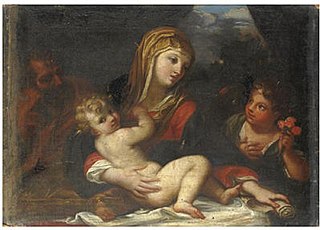
Giacinto Calandrucci was an Italian painter of the Baroque period.

Guglielmo Borremans or Guglielmo Fiamingo (1670–1744) was a Flemish painter whose documented career took principally place in Italy, in particular Naples, Cosenza and Sicily. Here he was one of the pre-eminent late-Baroque fresco painters of the first half of the 17th century who received multiple commissions to decorate churches and palaces.

Gaetano Lapis (1706-1773) was an Italian painter of the late-Baroque period.
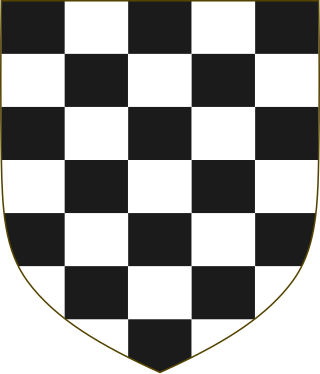
The Pepoli family was an Italian aristocratic banking family of Bologna, in northern Italy. They were lords of the city for thirteen years in the fourteenth century. A branch of the family moved to Trapani in Sicily and were granted several feudal lordships and baronies.
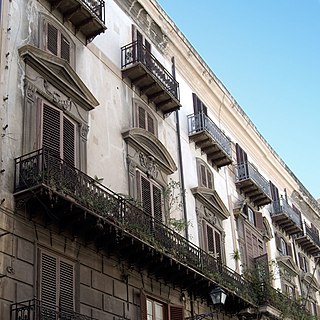
Palazzo Isnello is an historic palazzo situated between the ancient via del Cassaro and Piazza Borsa, in the Kalsa quarter of Palermo, Sicily.

The Apotheosis of Palermo is a fresco by Vito D'Anna in the Palazzo Isnello, Palermo, Italy, considered one of the most representative works of the Sicilian Baroque painting.

Vito D'Anna was an Italian painter, considered the most prominent painter of Palermitan rococo and one of the most important artists of Sicily.
Francesco Sozzi was an Italian painter, active in style characteristic of the Rococo period in Palermo. He is distinguished from other fellow painters for his graceful, delicate, and elegant style.
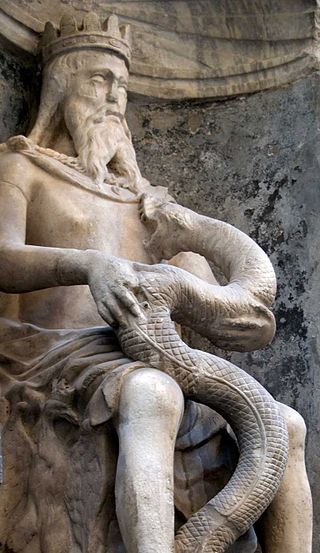
The Genius of Palermo is one of the city symbols and the lay patron of Palermo. He was the ancient numen and genius loci of the Sicilian city.

The Palazzo Barbarigo Minotto is a 15th-century palace on the Grand Canal in Venice, northern Italy, next to the much larger Palazzo Corner. Built in the Venetian Gothic style, it was originally two palaces, Palazzo Barbarigo and Palazzo Minotto, later joined together. The Barbarigo palace was owned by the Barbarigo family for several centuries and was the birthplace of Gregorio Barbarigo, who once refused the Papal Crown. It was later owned by the Minotto and Martinengo families.

The Palazzo or Ca' Cappello Layard is a palace situated in the sestiere of San Polo of Venice, Italy, overlooking the Grand Canal at the confluence between this and the smaller Rio di San Polo and Rio delle Erbe. On the Grand canal, it is located between Palazzo Barbarigo della Terrazza and Palazzo Grimani Marcello. It is particularly noteworthy for having been the residence of Austen Henry Layard, discoverer of Nineveh.
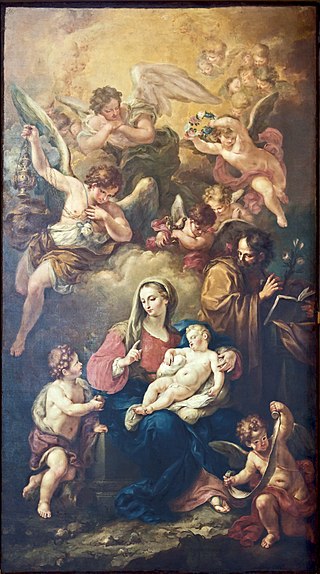
Giovanni Battista Mengardi, or Giambattista Mengardi was an Italian painter and art restorer.
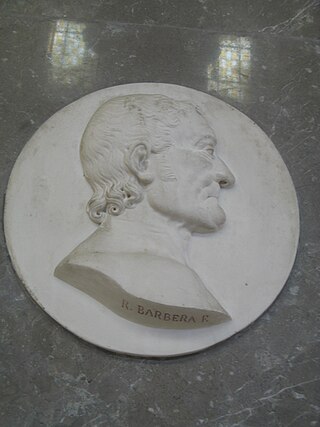
Giuseppe Velasquez, Velasques or Velasco was an Italian painter, active in a Neoclassic style.
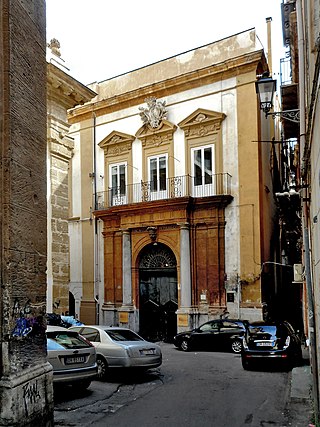
Palazzo Natoli is a Baroque palace in Palermo, in the Mediterranean island of Sicily. It was built by Vincenzo Natoli in 1765. It has a fine entrance on via S. Salvatore, and frescoes by Gioacchino Martorana.

Minerva between Geometry and Arithmetic is a 1550 fresco fragment, usually attributed to Paolo Veronese but by some art historians to Anselmo Canera or Giambattista Zelotti. It was painted for the Palazzo de Soranzi in Castelfranco Veneto but now in the Palazzo Balbi in Venice.
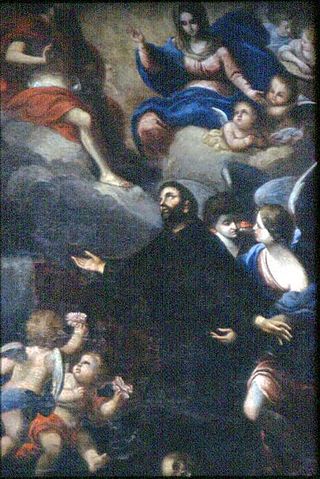
Andrea Carrera or Carreca was an Italian Baroque painter mainly active in Sicily. He was born in Trapani and died in Palermo.
Gioacchino Di Marzo was an Italian art historian, librarian and Jesuit. He was librarian to the Comunale di Palermo as well as a historiographer and one of the founders of modern Sicilian art history.
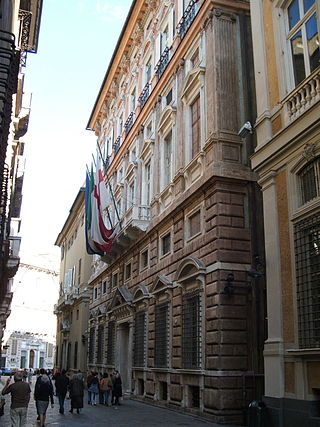
The Palazzo Carrega-Cataldi or Palazzo Tobia Pallavicino is a building located in via Garibaldi (Genoa) at number 4 in the historic centre of Genoa, included on 13 July 2006 in the list of the 42 palaces inscribed in the Rolli di Genova that became World Heritage by UNESCO on that date. The building is now the headquarters of Genoa's Chamber of Commerce.
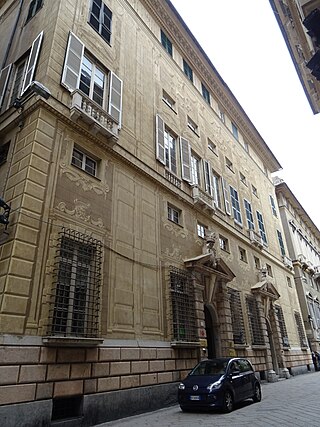
The palazzo Cattaneo-Adorno or palazzo Lazzaro e Giacomo Spinola is a building located on via Garibaldi, in the historical centre of Genoa, marked by house numbers 8 and 10, included on 13 July 2006 in the list of 42 palaces inscribed in the Rolli di Genova, which became World Heritage by UNESCO on that date. It houses a remarkable cycle of Baroque frescoes by Lazzaro Tavarone.
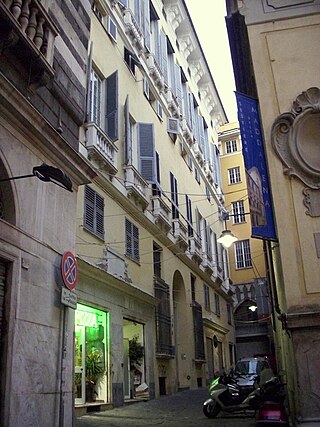
The palazzo Gio Battista Grimaldi is a building located in vico San Luca at no. 4 in the historical centre of Genoa, included on 13 July 2006 in the list of the 42 palaces inscribed in the Rolli di Genova that became World Heritage by UNESCO on that date.